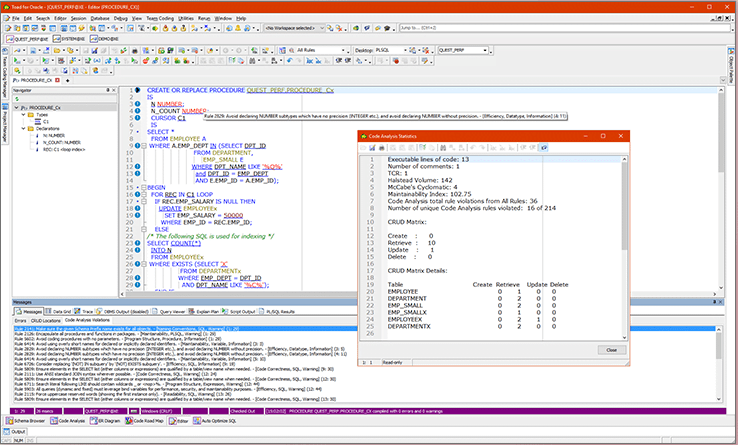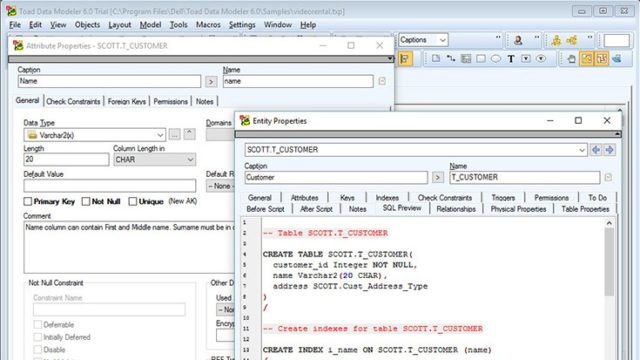

- Toad for sql server null install#
- Toad for sql server null upgrade#
If you want to open and/or modify a script using a newer version of Toad, you must upgrade the script. Upgrade Automation Scripts to Newer Version of ToadĪn automation script is compatible with the version of Toad in which the script was created. Note: If Toad was installed with the Prohibit saving passwords option selected, the Automation module is disabled and Toad does not prompt you to migrate scripts. Toad prompts you to migrate scheduling tasks when you initially launch the application after installation. After upgrading Toad, those previously-created, scheduled scripts will not execute in the newer version until you migrate each script's scheduling task. In addition, scheduled scripts are scheduled to run using the version of Toad in which they were created. Toad prompts you to automatically upgrade a script when you attempt to open it in a newer version. If you upgrade to a newer version of Toad, Automation scripts created in a previous version must be upgraded before you can open them in the newer version.


Use Control Panel | Programs and Features | Uninstall or change a program and select to uninstall the Toad for SQL Server Diagnostic Server. If the Diagnostic Server was installed with a previous release of Toad for SQL Server then uninstall that program.

Note: The Diagnostic Server is no longer used by Toad for SQL Server. To migrate the settings again, remove or rename the current version's Application Data folder and migrate the files from the previous version's Application Data folder. The settings files include database connections, layout customizations, shortcut keys, and options customized in the Options pages. If you are upgrading from a previous version of Toad, you are prompted to migrate your settings the first time you start Toad.
Toad for sql server null install#
Select the products you want to install and click Install. Run Toad installer from the DVD or downloaded file. Storage Performance and Utilization Management. Information Archiving & Storage Management. Hybrid Active Directory Security and Governance. Starling Identity Analytics & Risk Intelligence. One Identity Safeguard for Privileged Passwords. Tip: You can save this Query Builder file (.tsm) and click Automate to schedule query execution, generate a report of the results, and email the report to colleagues. If you click this for the Fiscal or Academic calendars, you are prompted to revert back to the original version.Īdd additional columns and complete the query. Click to view the dates.If you select a Custom calendar, you can customize the dates. Academic or Custom-For the Period name, updating the name updates the name value in the Date Range Values list. Fiscal-For Fiscal calendar type, you can select Normal, or two four week periods and one 5 week period that can be defined as 4/4/5, 5/4/4, or 4/5/4. Review the following for additional information about the Calendar Editor: If you select a calendar type other than Gregorian, you can click to edit the selected calendar. Select the type of calendar to use for the date range values. Review the following for additional information: Calendar Select the Where Condition field below the date column and click. Select a column with a date data type from a table in the Diagram tab. The following date range commands are available and can also be used in the Editor: Toad inserts the correct SQL between these quotes when you execute the query. The criteria is empty and contains two single quotes without a space. WHERE (sales.ord_date = '' /*Last year*/ ) The following displays the revised query: This ensures that your query is valid regardless of the date. With Toad, you simply select Last year to dynamically insert the correct SQL. WHERE (sales.ord_date BETWEEN ' 00:00:00' In the past, you hard coded the dates to create the following statement: You need to create a query that retrieves a list of the orders that were placed last year. If you want to view the syntax of the date range so you can copy it to another application, click the date range link in the Query tab, as illustrated in the following: Note: The date range format is specific to Toad. Identifying the actual date range to use is time consuming, confusing, and is often error prone. When writing a query, you frequently need to retrieve data from a range of dates such as the last week, month, or quarter.








 0 kommentar(er)
0 kommentar(er)
